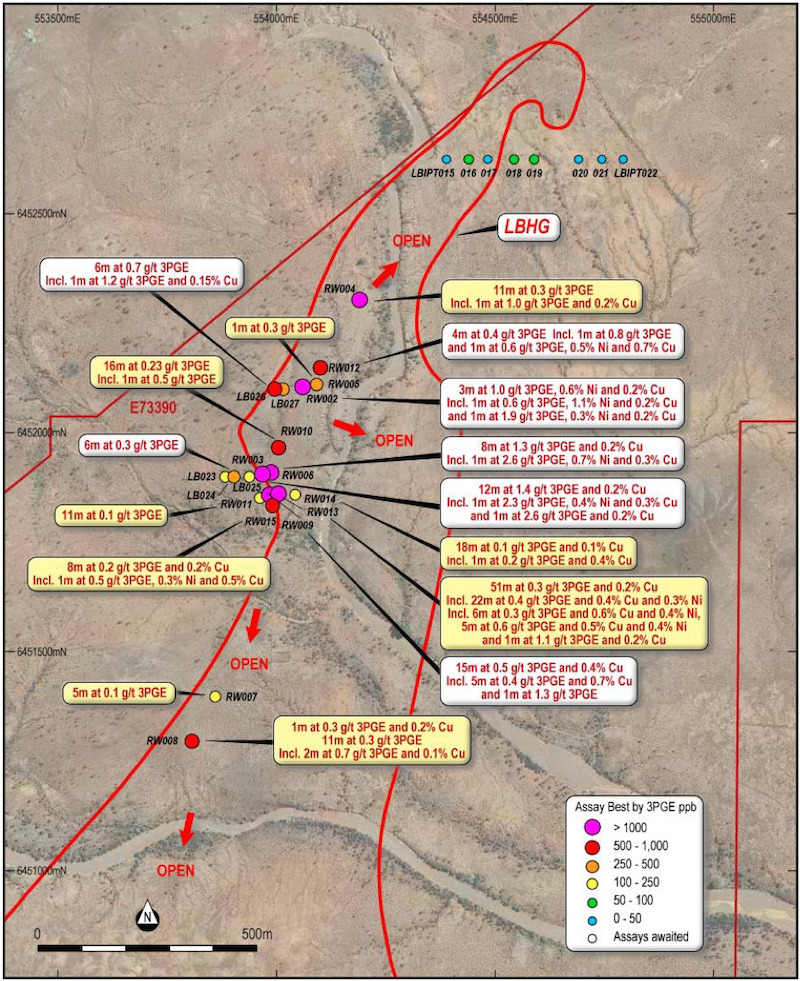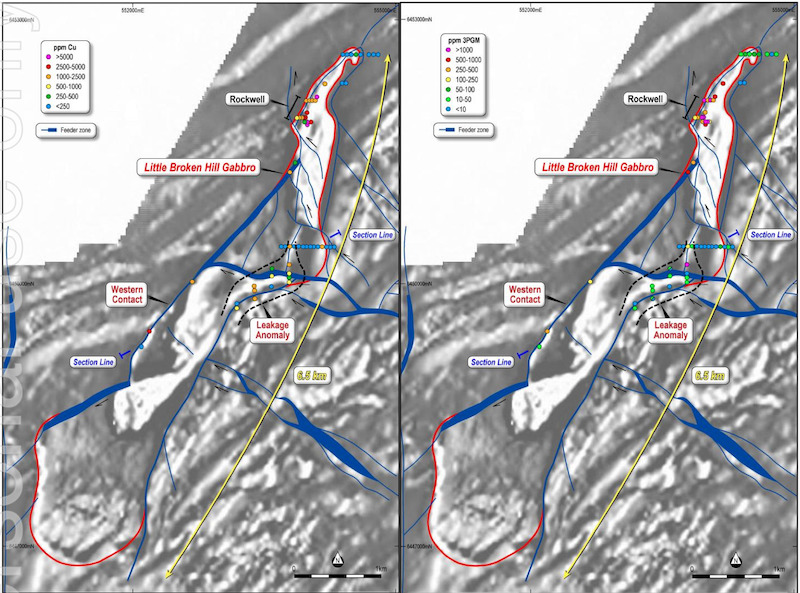Impact follows the promising PGE path at Little Broken Hill Gabbro

Pic: Schroptschop / E+ via Getty Images
New assays from Impact Minerals’ Little Broken Hill Gabbro (LBHG) have further confirmed the prospective nature of the intrusion.
LBHG, within the broader Broken Hill nickel-cobalt-platinum group element project in New South Wales, is a large and poorly explored intrusion which Impact (ASX:IPT) believes has potential to be a significant mineral find.
At the Rockwell area of the LBHG, significant PGE-copper-nickel mineralisation within the basal ultramafic unit has now been shown to be up to 60m thick, extend to a depth of at least 150m from surface and run for at least 1500m along trend.
Latest results have increased thickness and grade at depth, in particular to the south, but is open in all directions.
Assays reported include the following:
- 51m at 0.3 g/t 3PGE from 140 metres in RWIPT013, including 6m at 0.5% copper, 0.4% nickel and 0.3 g/t 3PGE from 154m, 5m at 0.5% copper, 0.4% nickel and 0.6 g/t 3 PGE from 161m, and 1 metre at 0.2% copper and 1.1 g/t 3PGE from 186m;
- 11m at 0.8 g/t 3PGE from 101 metres in RWIPT004, including 1m at 0.9 g/t 3PGE and 0.15% copper from 105m, and;
- 11 metres at 0.3 g/t 3PGE from 40m in RWIPT008, including 2m at 0.7 g/t 3PGE from 47m.

New results are highlighted in yellow. The northern line of drill holes with weaker results are vertical aircore drill holes that are no more than 50 metres deep. Pic: Supplied
Three very widely spaced drill holes at the Western Contact prospect along the basal ultramafic unit 2km south of Rockwell also returned anomalous PGE-copper mineralisation across a 1km trend, including:
- 16 metres at 500 ppm copper and 0.2 g/t 3PGE from 83m in LBIPT053, including 2m at 0.3% copper and 0.2 g/t 3PGE from 89m, and 3m at 0.1% copper and 0.4 g/t 3PGE from 94m.
At the Central LBHG prospect, an area of at least 1km by 500m has been identified with anomalous copper and 3PGE centred over a possible ‘feeder zone’. IPT has interpreted this to be a possible halo or leakage anomaly above a larger mineralised zone at depth.
Assays from this area returned 4m at 1.5g/t gold and 0.13% copper from 150m in hole LBIPT040, including 1m at 4.5g/t gold and 0.18% copper from 152m.

Drilling was guided exclusively by Impact’s proprietary ratio for PGE exploration, and new assay data has now identified two separate trends to the mineralisation which Impact believes may reflect both magmatic and hydrothermal processes as commonly seen around major deposits.
Impact managing director Dr Mike Jones said the results, which represent the first ever drill program at LBHG and only measured a small portion of the 6.5km target unit, were extremely encouraging for the discovery of a significant deposit.
“These results continue to confirm our belief that the LBHG may potentially contain a vast reservoir of PGEs and possibly nickel and copper,” he said.
“We have to remember that this is the first ever drill programme to test the basal ultramafic unit and yet every drill hole that has intersected it has returned some level of mineralisation.
“It is evident that there is very significant potential along the entire length of the 6.5km-long intrusion.
“We have made another breakthrough with our ratio indicating two separate chemical trends are at play and this will further help guide our follow up drill programmes.
“We are fortunate that most of the immediate follow up drill holes already have statutory approvals in place and we look forward to drilling at Broken Hill as soon as possible after our on-going drill programme at Apsley is complete.”
Uncovering secrets
Impact’s previous work at LBHG had shown the area to be of a similar size, age, chemical composition and geodynamic setting to the giant Jinchuan nickel-copper-PGE deposit in China.
That deposit has a resource of 550Mt at 1.1% nickel, 0.7% copper and 0.5g/t PGE, and initial scout drilling results are considered very encouraging for the discovery of a project of this kind at LBHG.
At the project, Impact said virtually every drill hole that had penetrated the basal ultramafic unit had intersected anomalous PGE with variably anomalous nickel and copper. Suggestions are that the ultramafic unit generally carries anomalous PGEs over its entire thickness with narrower zones of better grades up to 2.6g/t PGEs, 1.1% nickel and 0.7% copper towards the base of the unit in places.
“It is evident that there is potentially a very large inventory of those metals contained within the target basal unit and extensive follow-up drilling, including diamond drilling for the first time, is clearly required at many places within the LBHG,” Impact said in a release to market.
“A detailed interpretation of the large amount of new data generated from the extensive drill programs completed at LBHG, Platinum Springs and Red Hill is now in progress to prioritise areas for follow-up drilling.
“In addition, downhole electromagnetic surveys will be completed on five drill holes across the project area to search for targets that may represent massive sulphide bodies. This work should commence in May.”
Drilling will resume at LBHG once the ongoing drill program at Impact’s Apsley porphyry copper gold prospect is completed.
Platinum group metals are in high demand at the moment, with strong fundamentals for further growth.
This article was developed in collaboration with Impact Minerals, a Stockhead advertiser at the time of publishing.
This article does not constitute financial product advice. You should consider obtaining independent advice before making any financial decisions.
UNLOCK INSIGHTS
Discover the untold stories of emerging ASX stocks.
Daily news and expert analysis, it's free to subscribe.
By proceeding, you confirm you understand that we handle personal information in accordance with our Privacy Policy.








